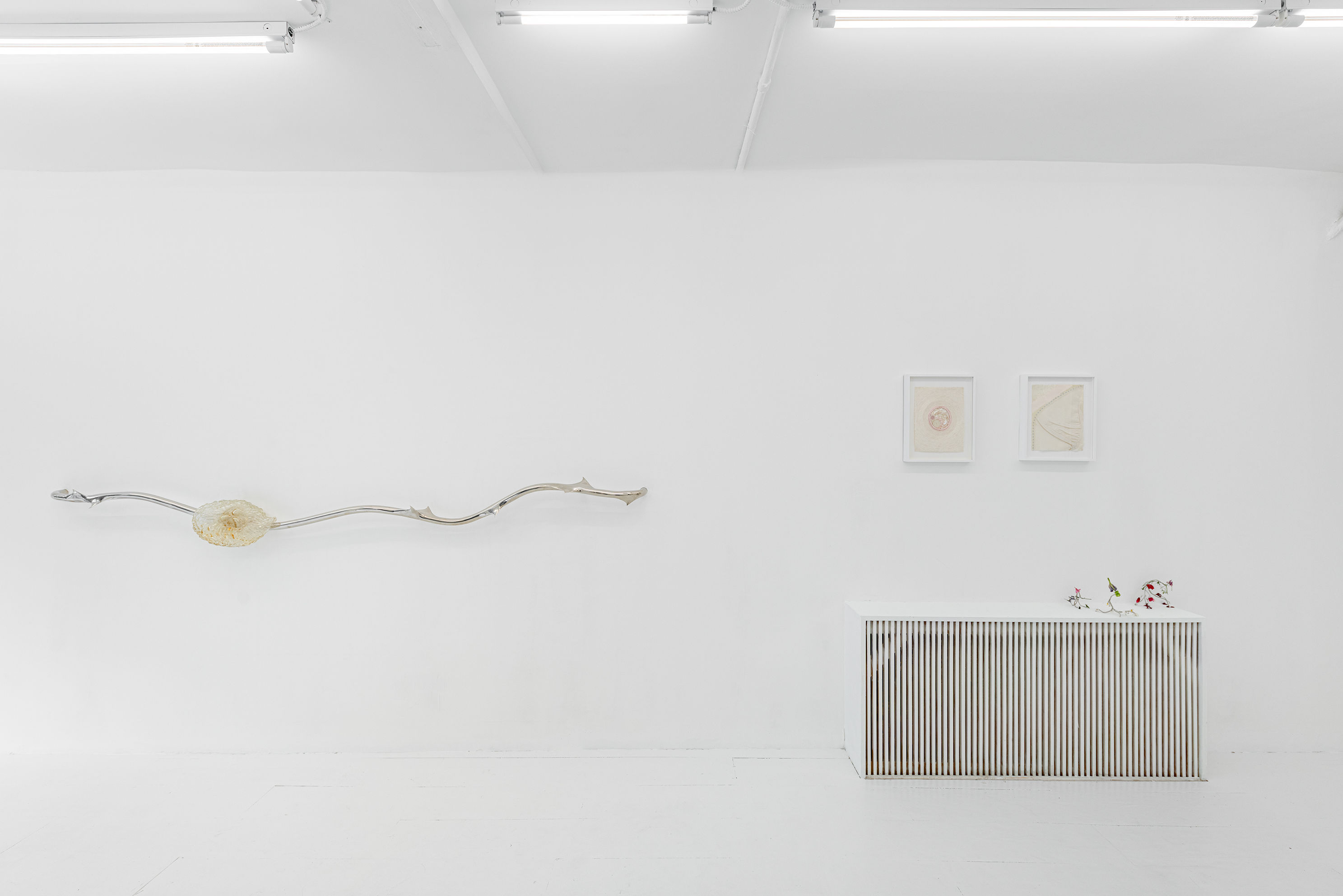Discover the Beauty and Awesome Power of Mount St. Helens at The Portland Art Museum
Artists have depicted volcanic eruptions for centuries because they are the most visually spectacular manifestations of nature’s awesome power. Earthquakes, fires, and hurricanes can affect much larger areas, but few are as breathtakingly beautiful as volcanic eruptions. To commemorate the 40th anniversary of the eruption of Mount St. Helens in 1980, the Portland Art Museum presents an exhibition through May 17th that examines artists’ responses to the beauty and power of the volcano. From pre-contact Native American objects to contemporary paintings, drawings, and photographs, the show will trace the mountain’s changing image and significance for local peoples.
Keep reading to get a sneak peek of works in the show and to learn more about Community Partner in Residence the Mount St. Helens Institute.
Mount St. Helens, Columbia River, Oregon, ca; 1889
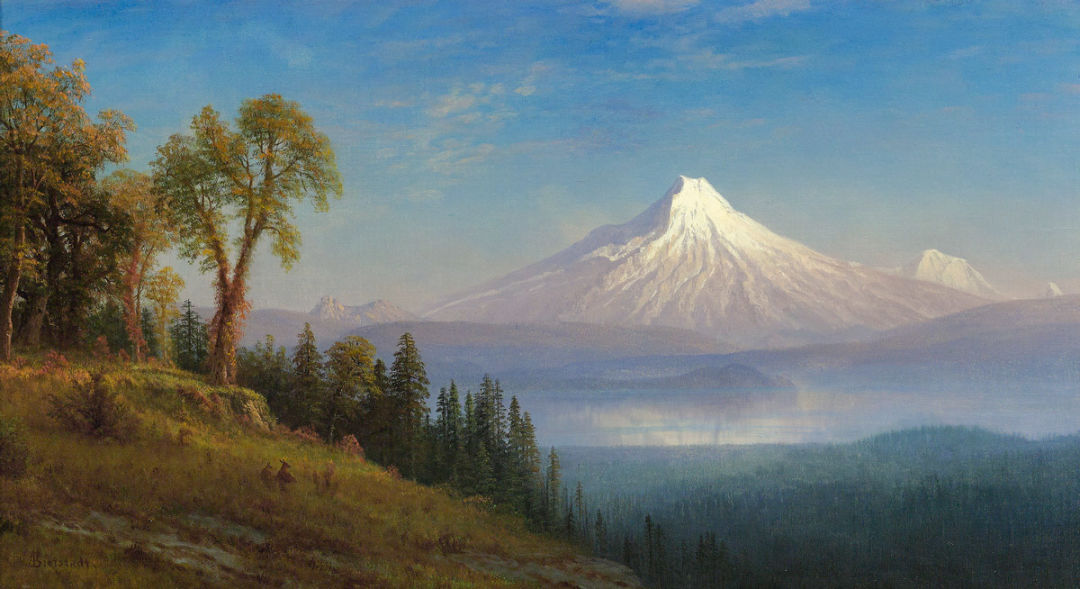
Albert Bierstadt. American, born Germany, 1830-1902. Mount St. Helens, Columbia River, Oregon, ca; 1889. Oil on canvas. The L.D. "Brink" Brinkman Collection, LDB Corporation, Kerrville, Texas
Image: Courtesy Portland Art Museum
“Bierstadt was tireless in his pursuit of splendid scenery for his paintings. He was already internationally famous when he visited Oregon and Washington for the second time in September and October of 1889. During this second trip, he likely made sketches that he used in creating this painting in his New York studio. The autumnal foliage of the deciduous trees would seem to confirm this date. However, the artist regularly adjusted the appearance of sites as well as seasons to create a beautiful picture." –Dawson Carr, Portland Art Museum Curator of European Art
Eruption of Saint Helens from Cable Street, 1981
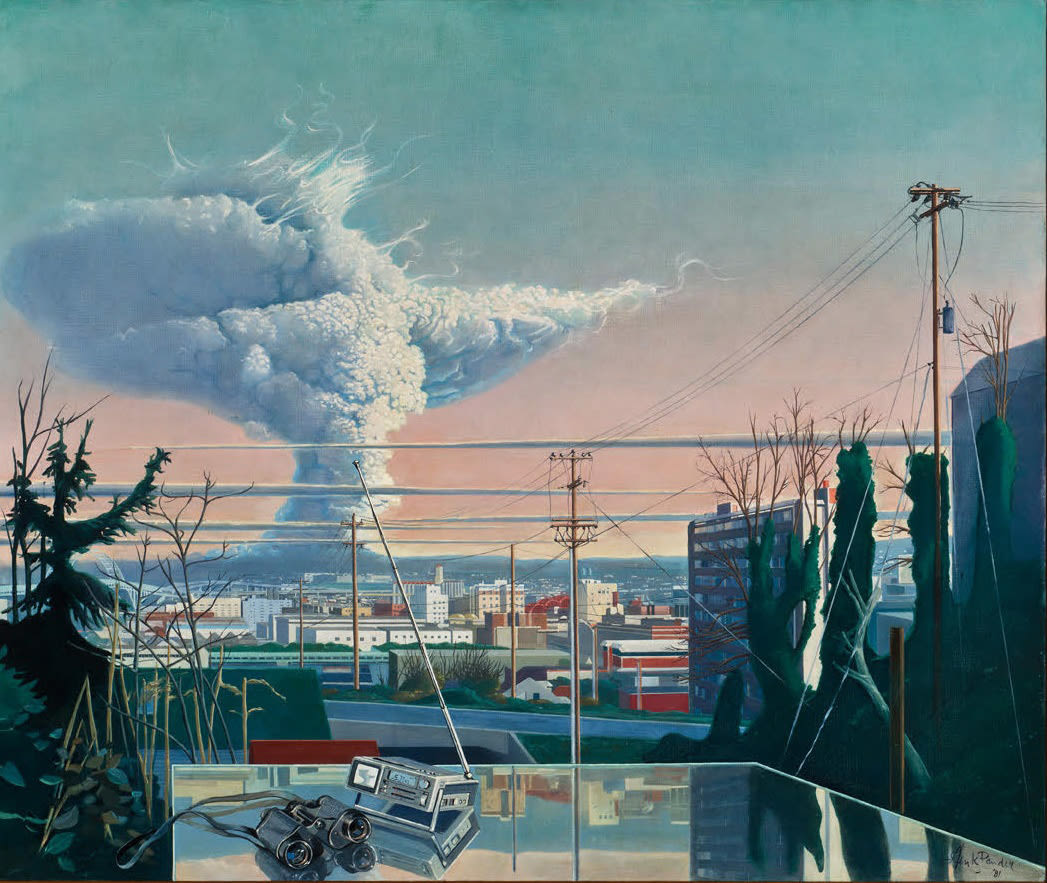
Henk Pander. American, born Netherlands, born 1937. Eruption of Saint Helens from Cable Street, 1981. Oil on linen. City of Portland Public Art Collection, courtesy of the Regional Arts and Culture Council
Image: Courtesy Portland Art Museum
“This painting is the culmination of a great many works I did in response to the eruptions of Mount St. Helens. The work was based on studies I made on July 22, 1980, when the eruption appeared against a clear summer sky. One of the studies is included in this exhibition. The view is from my yard on SW Cable Street. The painting is a reflection on the experience as seen in a mirror. It also recalls that it was a huge media event at the time.” —Henk Pander
Mirrored Porch, 1984
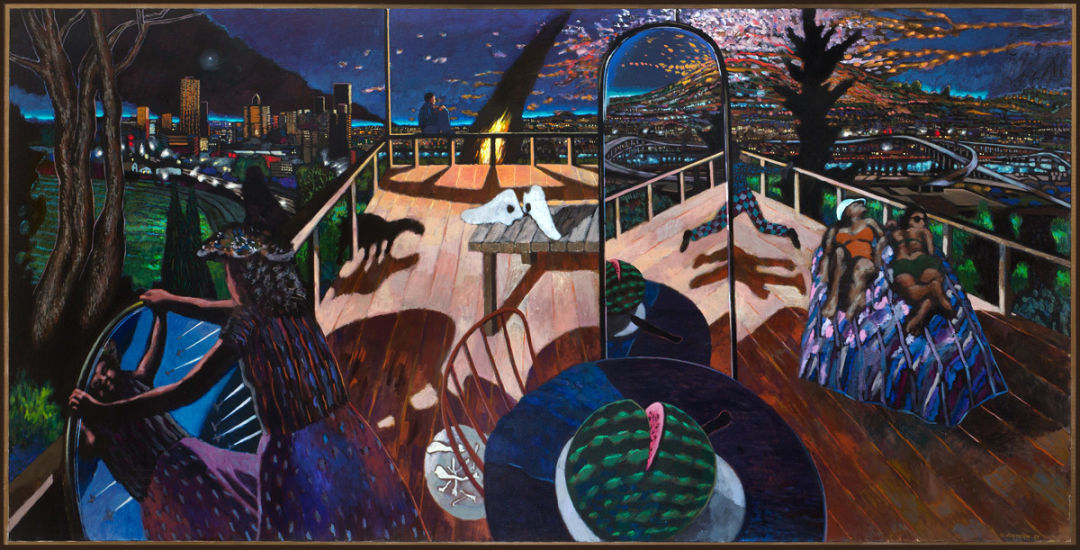
George Johanson. American, born 1928. Mirrored Porch, 1984. Oil on canvas. Lent by the artist.
Image: Courtesy Portland Art Museum
“In Mirrored Porch, the volcano is a big event, but not solely a threatening one. It is also something like a celebration, like fireworks on the 4th. So, in this painting it becomes both menacing and a visual feast.” —George Johanson
Ash and Snow on the South flank of Mount St. Helens, Washington, 1983
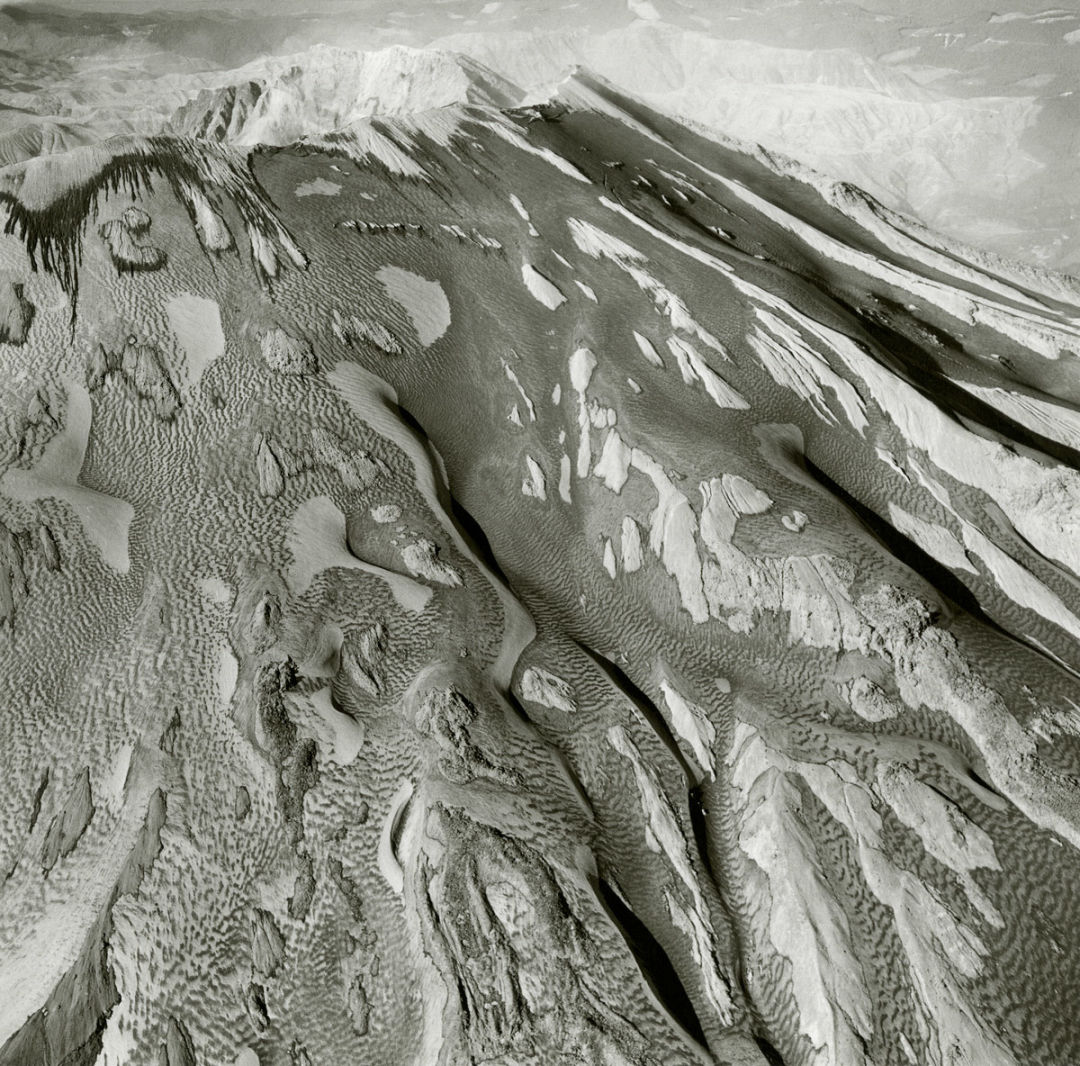
Emmet Gowin. American, born 1941. Ash and Snow on the South flank of Mount St. Helens, Washington; 1983. Gelatin silver prints. Courtesy of the artist.
Image: Courtesy Portland Art Museum
“In 1980, Gowin received a fellowship from the Seattle Arts Commission to photograph in Washington. He arrived in the Pacific Northwest one month after Mount St. Helens erupted with the force of more than 27,000 atomic bombs. A broad security perimeter kept the public far from the site, but Gowin worked tirelessly to secure permission to fly over the volcano. Although he had previously photographed from raised positions, such as tree houses and hillsides, this was his first attempt at aerial photography.
For the next five years, Gowin returned periodically to photograph Mount St. Helens from the air as well as the ground, marveling at the sublime beauty of the region, its sudden destruction, and its gradual rebirth.” —Julia Dolan, Portland Art Museum Curator of Photography
Community Partner in Residence—The Mount St. Helens Institute
The Museum is partnering with the Mount St. Helens Institute on a series of programs, tours, and in-gallery experiences during the exhibition. Founded in 1996, the Mount St. Helens Institute connects people of all ages to Mount St. Helens and the natural world through educational programming designed to enrich visitors’ appreciation and understanding of the Pacific Northwest’s youngest and most active volcano. For more information on the organization, visit mshinstitute.org. And to learn more about Mount St. Helens Saturdays, click here.
Want to get a better look at these spectacular pieces of artwork and more in-person? Purchase tickets to the exhibit, running through May 17, here.



